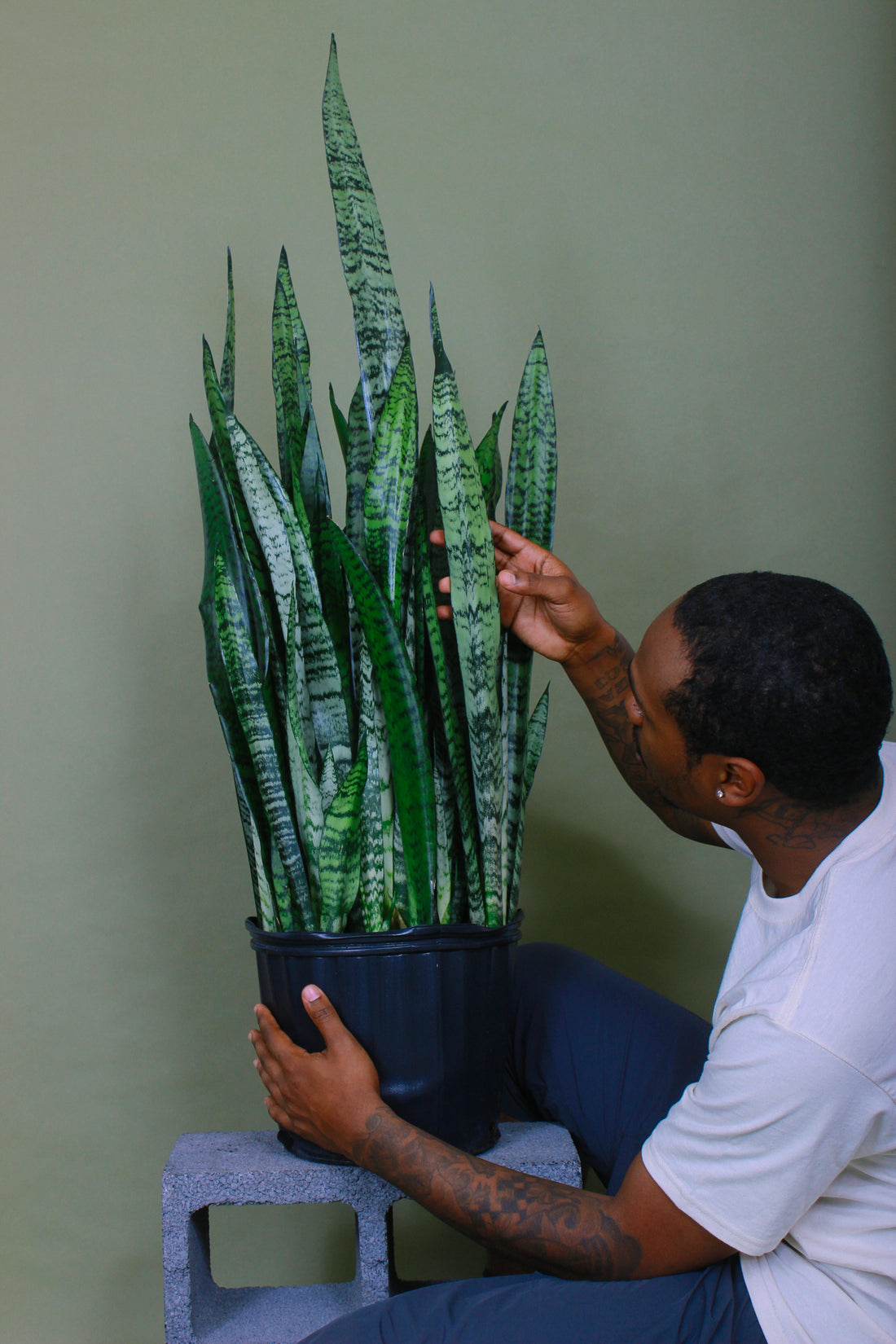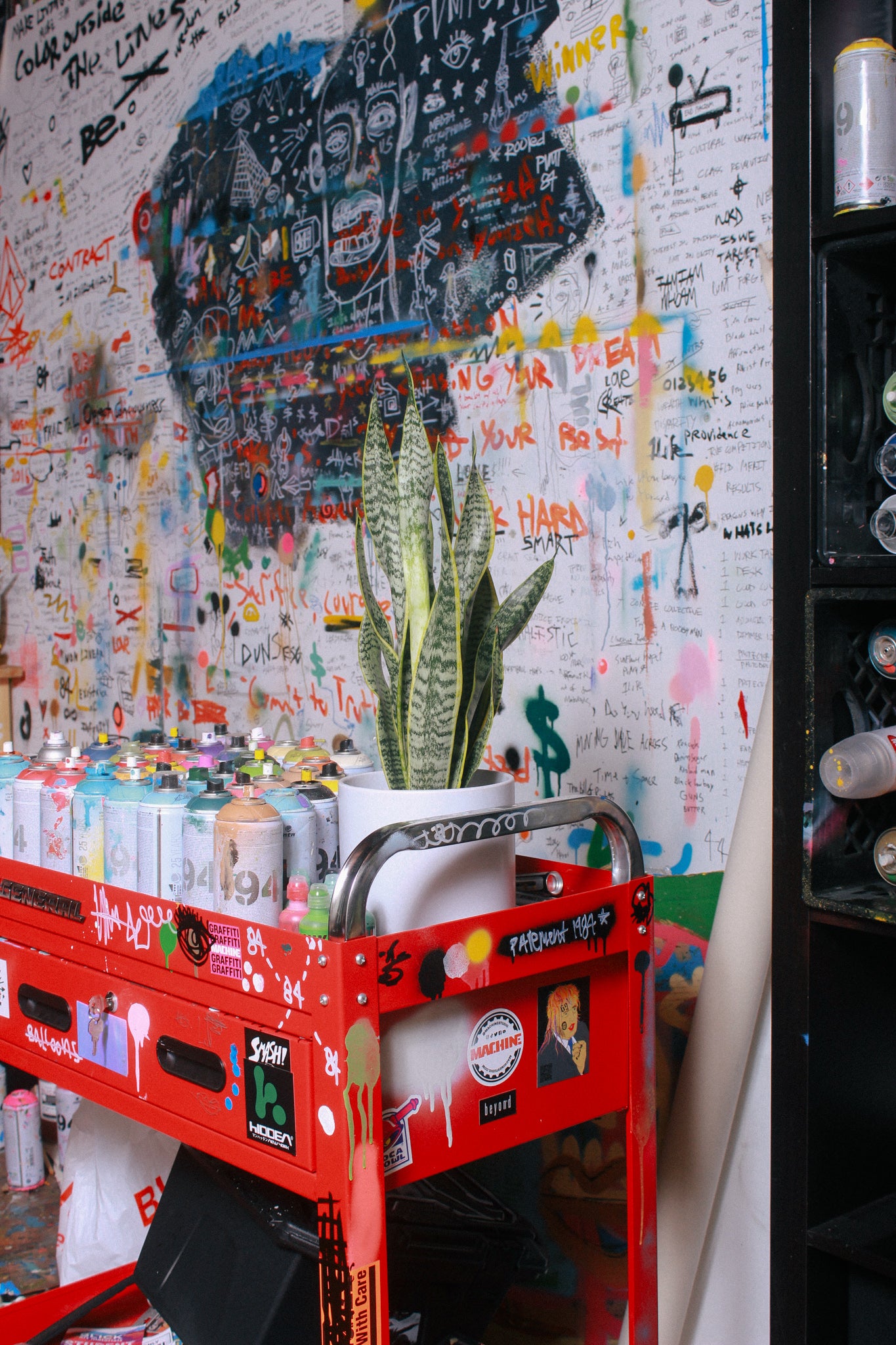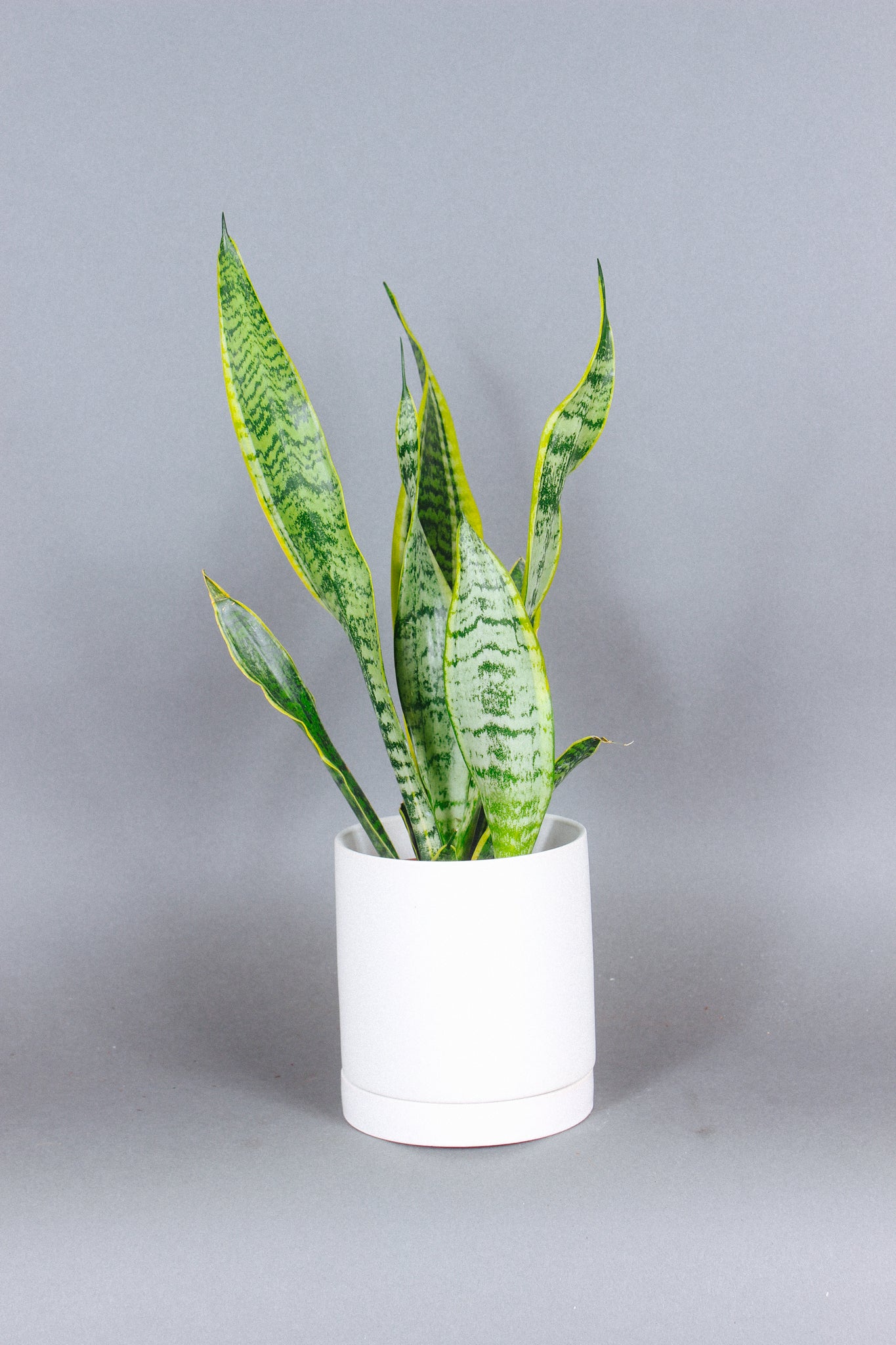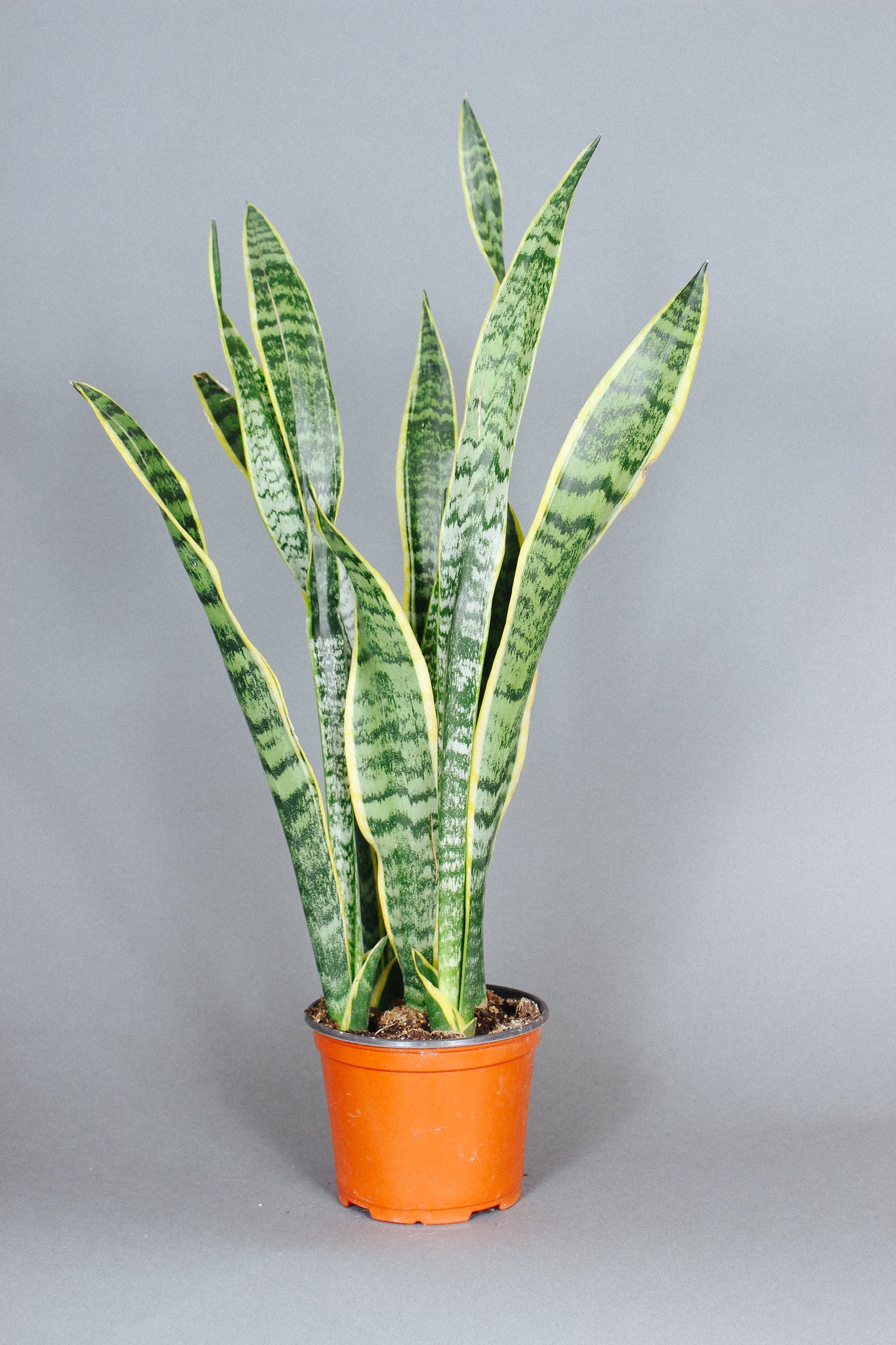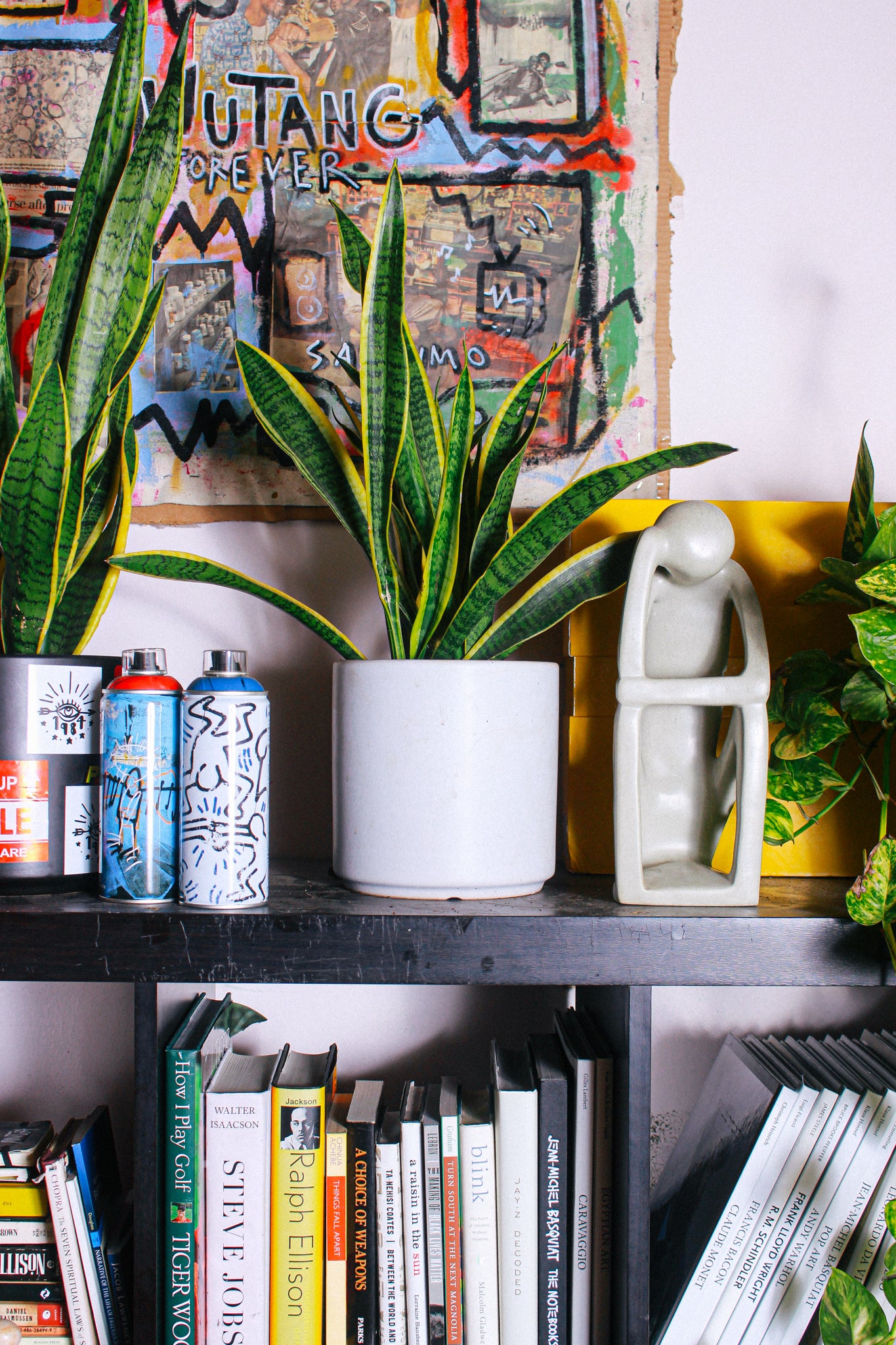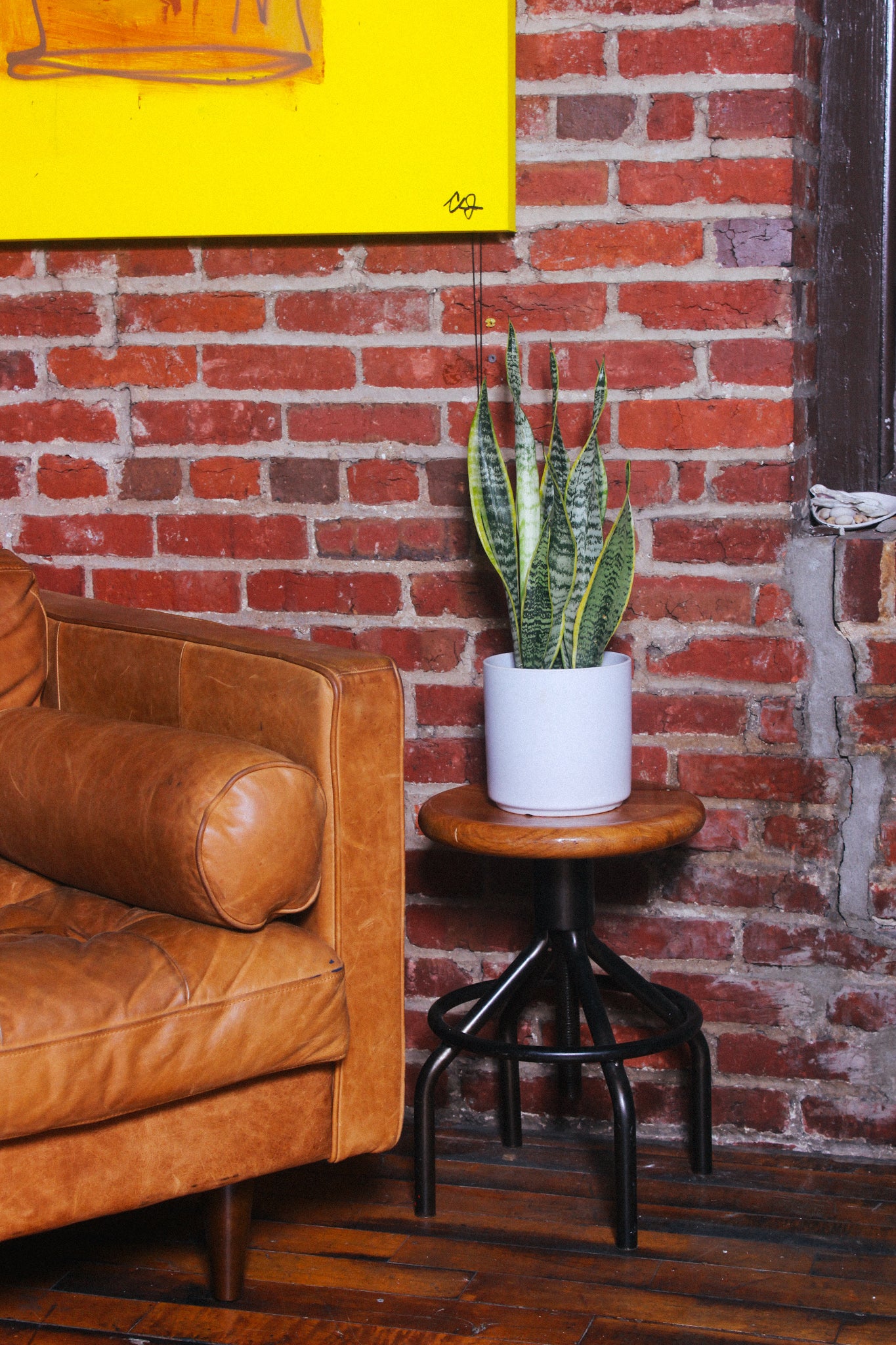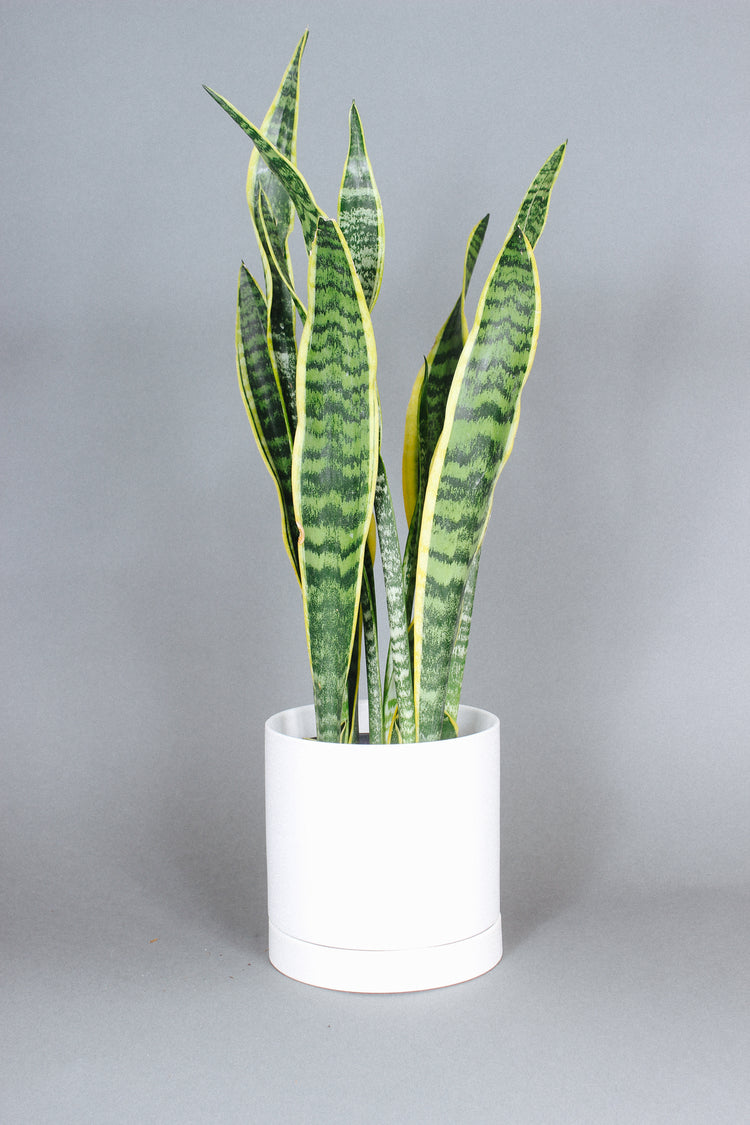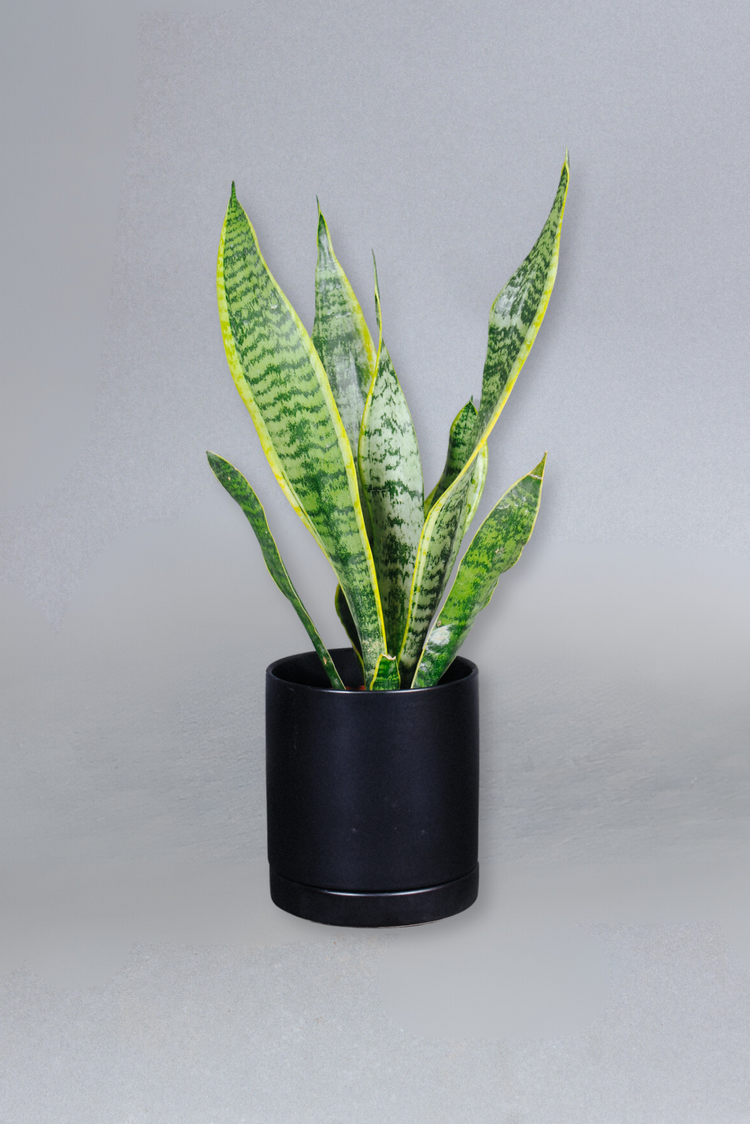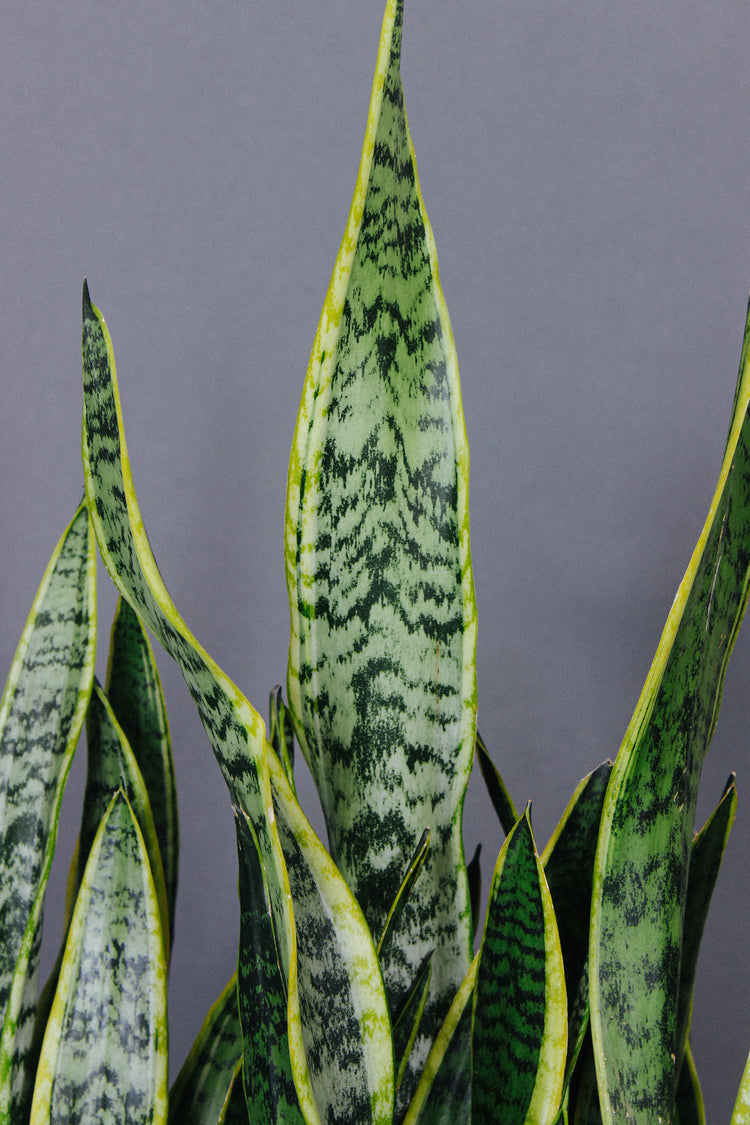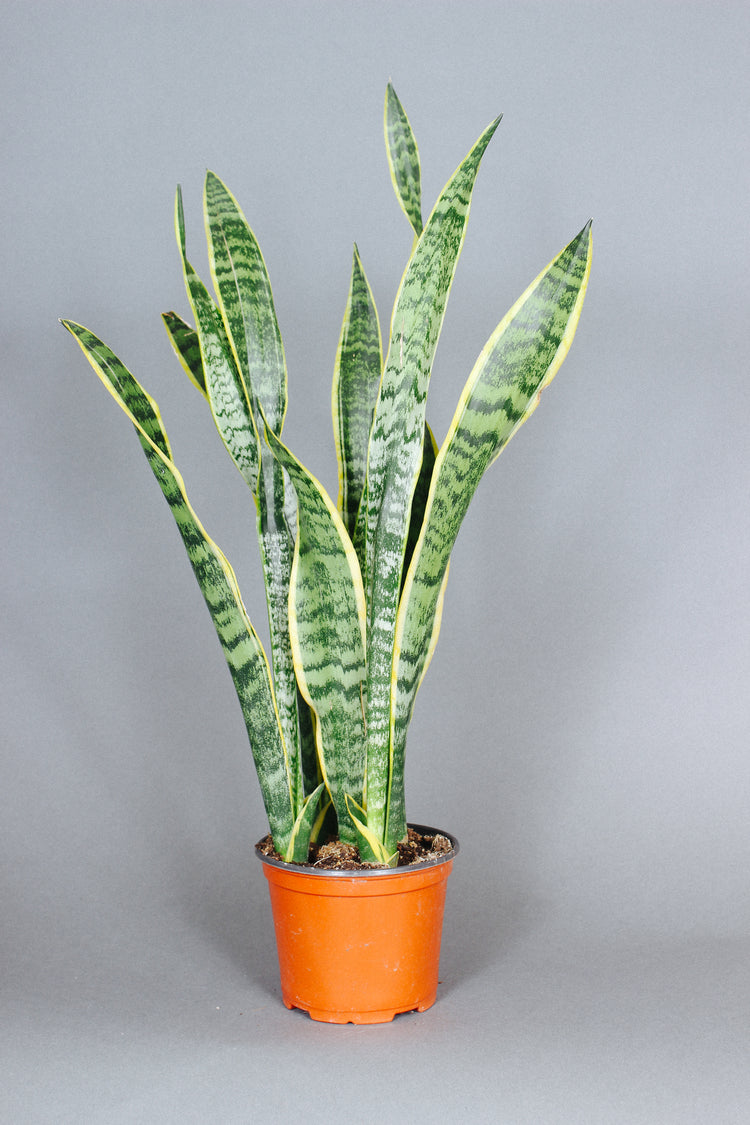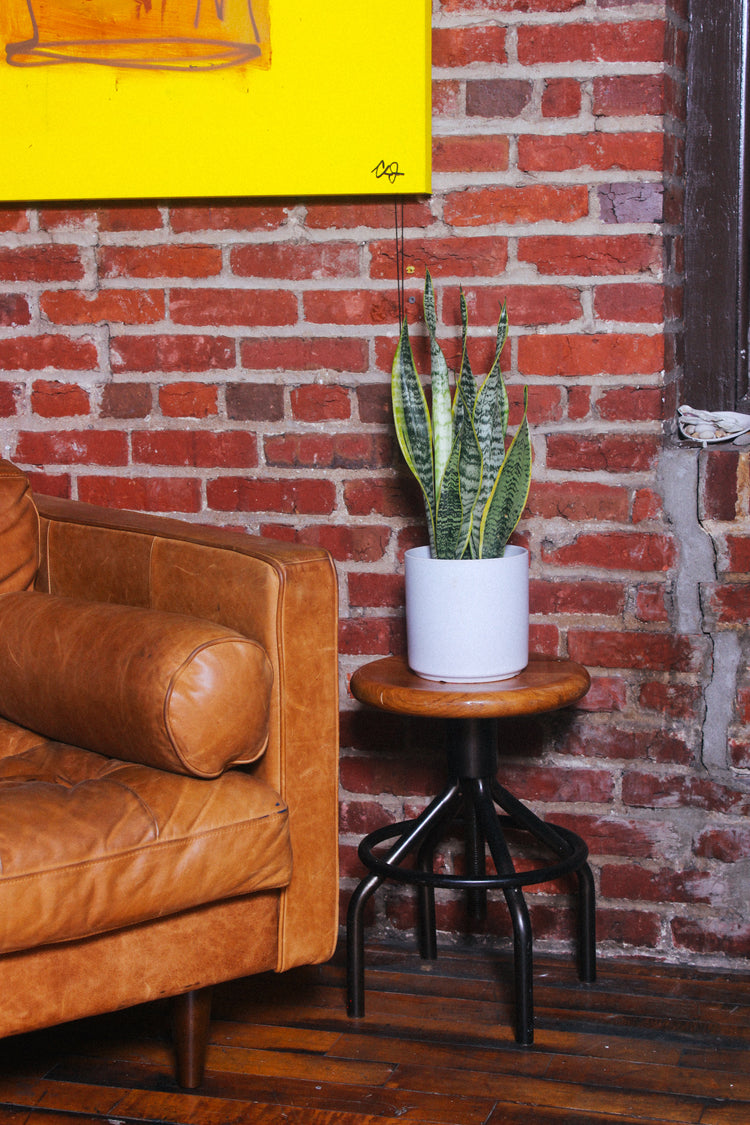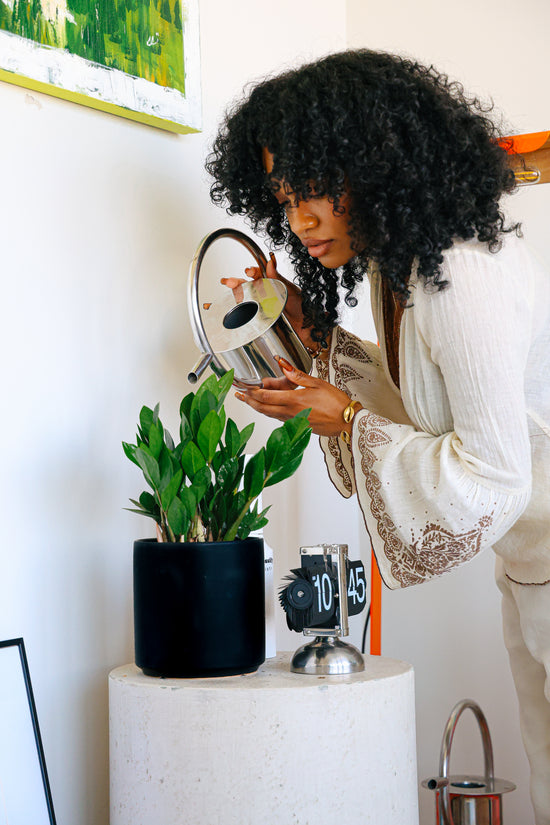Maintenance: Low | Climate: Warm + Dry | Light: Adaptable, Low-Bright | Watering: Infrequent | Pet Safe: No
Snake Plants are adaptable, hardy, and low-maintenance. They're one of many houseplants that improve air quality, even producing oxygen overnight. Recognized by its sword-shaped leaves that grow in upright, they can reach heights up to 6 feet tall indoors.
LIGHT
This plant is highly adaptable, tolerating low light conditions as well as bright light. Keep in mind that low light rooms should still receive some amount of daily light, otherwise the plant will not do well. Mature Sansevierias can even tolerate some direct sunlight.
WATER
Water your Sansevieria only after the soil has fully dried. This plant stores water in its leaves to survive periods of drought, so it's safer to underwater than overwater.
ENVIRONMENT
Snake Plants originate from tropical areas of West Africa, however, they thrive in average dry indoor conditions. Maintain temperatures between 60º-85º to keep your plant healthy. These are great outdoor plants under the right climate.
PRUNING AND PROPAGATION
Pruning old, brown, or yellow leaves is essential for the Sansevieria's health. Always prune with clean pruning shears or scissors. You can easily propagate Sansevieria leaves to start growing a new plant right from home.
Pruning Sansevieria Laurentii and Zeylanica:
- Use clean, sharp shears or scissors.
- Prune away damaged bits or cut a leaf entirely at a 45º angle.
- Healthy sections can be propagated in water (below).
Propagating Sansevieria leaves:
Leaves can propagated by cutting sections across the leaf and placing them in clean water. After a few weeks, roots will begin to grow into the cuttings.
- Use clean, sharp shears or scissors.
- Cut leaf sections at a 45º angle. One leaf can be cut horizontally multiple times, and each cutting will grow its own roots.
- Place cuttings upright in clean water, refilling as needed.
- Once roots have developed, pot in loose, succulent soil.
COMMON PROBLEMS
Sansevierias are one of the easiest plants to welcome to your home. Here are some possible issues you might run into:
YELLOW LEAVES
Snake plants most commonly develop yellow leaves when the soil has been wet too long, due to overwatering or poor drainage. They prefer soil to dry out fully in between each watering and loose, well-draining soil. Yellow leaves can also occur due to a nutrient imbalance or with natural aging.
BROWN LEAVES
Brown may develop on leaves when exposed to direct sunlight or under very dry conditions. On the other hand, brown leaves that are soft and mushy are a sign of overwatering or soil that has been wet for too long.
SHRIVELED LEAVES
Leaves begin to shrivel on a Snake Plant when the plant is thirsty. Water gets stored in the leaves, so wrinkles are a sign that storage is depleted. Mushy leaves on the other hand, are a sign of root rot, especially if the soil is wet.
LEAVES FALLING OVER
Snake plant leaves may begin to lean over when they have been overwatered or soil has been left wet for too long. Let the soil dry out completely in between waterings and check the roots for dark, mushy sections. These are signs of root rot which should be discarded.
Questions? Contact Us.


